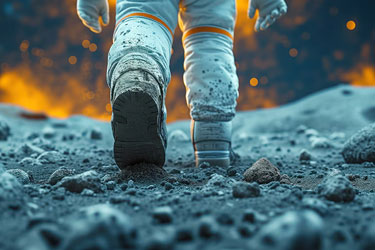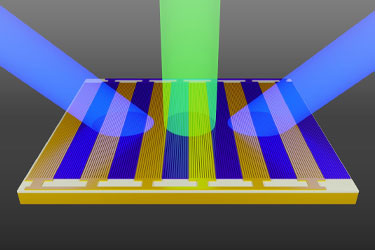Chang'e 6: A precious "gift" from the back of the moon
On June 25, China's Chang'e 6 return vehicle successfully brought samples from the back of the Moon back to Earth, a historic event that drew the attention of the global scientific community. These precious lunar samples will provide an unprecedented opportunity for scientists to study the origin, evolution and structure of the Moon, and to unravel the mystery of the differences between the front and back of the Moon.

Scientists' expectations: unlocking the Moon's secrets
The success of the Chang'e 6 mission has raised scientists' expectations for the study of lunar samples. More than 200 scientists from Chinese universities and research institutes have begun discussing what scientific questions they hope to address by analyzing the samples. The three questions they believe are the most important include:
Why are the front and back of the Moon so different? The reasons behind the significant differences between the front and back of the Moon in terms of surface features, geological structure and material composition have been a focus of attention for scientists.
What does the deep structure of the Moon's interior "look like"? The exploration of the Moon's internal structure is crucial to the understanding of the Moon's evolutionary process.
When was the "South Pole-Aiken" basin formed? As the largest impact basin on the Moon, the timing of the formation of the "South Pole-Aiken" basin has been the center of debate in the scientific community.
International Cooperation: Exploring the Mysteries of the Moon Together
The Chang'e 6 mission also demonstrated the spirit of international cooperation. The mission carried scientific instruments from the European Space Agency, France and Italy, as well as Pakistan's CubeSat. These international collaborations provided scientists with a broader perspective to explore the mysteries of the Moon.
European Space Agency's Negative Ion Analyzer for the Lunar Surface (NILS) detected negative ions on the Moon for the first time. Studying these particles helps scientists understand the environment of the lunar surface and provides reference for future robotic and manned missions.
France's Detection of Radon on the Moon (DORN) recorded 19 hours of high-quality data during its operations on the lunar surface. The data will provide scientists with valuable information on the internal structure and material composition of the Moon.
China's pace of lunar exploration does not stop
The successful conclusion of the Chang'e 6 mission marks a new milestone in China's lunar exploration program. China is now planning the Chang'e-7 and Chang'e-8 missions, which will be more complex and are scheduled to be launched in 2026 and 2028 respectively. These missions will further promote the development of China's lunar exploration project and make greater contributions to human exploration of the moon and the universe.
The lunar samples brought back by Chang'e 6 are not only precious "gifts", but also a key to open the door to the mysteries of the Moon. It is believed that in the future, scientists will unveil more secrets about the Moon through the study of these samples, adding a new chapter to mankind's knowledge of the universe.
MORE FROM WIRED

- Apple's fall event: iPhone 16 series makes a stunning debut

- Space-Time Metasurfaces: Unlocking a New Future for Wireless Communications and Optical Applications

- Novel RNA Construction Module Enables Efficient Production of High-Density RNA Microarrays
- Aug,30,2024

- Innovative Applications of Drone Technology in Agriculture
- Aug,21,2024

- OpenAI Launches SearchGPT, an Innovative AI Search Engine
- Aug,19,2024

- Google Pixel 8A: AI technology-enhanced, the king of price-performance ratio
- Aug,07,2024

- Application of 5G in Intelligent Transportation System
- Aug,01,2024